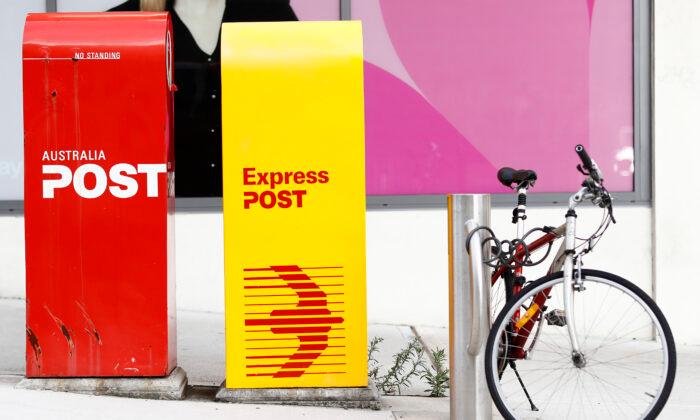Australia’s national postal service will aim to reach net-zero by 2050, under a new sustainability road map released on Oct. 5.
The move will make Australia Post the first government business enterprise to set a net-zero emissions target and will see the organisation roll out a series of initiatives aimed at decarbonising its operations.
It comes despite comments from California-based ecomodernist Michael Shellenberger who said the natural environment was actually in a much healthier state now compared to how it has been portrayed by climate change activists.
By 2025, the group will aim to reduce emissions by 15 percent, source 100 percent of its energy needs from renewable sources, have “fully sustainable” packaging, decrease landfill waste by 20 percent, and spend A$100 million on social enterprise and Indigenous suppliers.
Australia Post currently operates the country’s largest electric delivery fleet at 4,635 vehicles.
By 2030, the company will also invest in “sustainable” aviation fuel, push to reduce the emissions of its delivery feet, and drive the adoption of electric vehicles by supply chain partners. While by 2040, the group will aim to accelerate the reduction of air freight emissions.
Group CEO Paul Graham said work was already underway to reduce the “carbon intensity” of the company’s operations.
Following the Net-Zero Agenda
The service spruiked its adherence to the United Nation’s Paris Agreement to keep global temperatures “well below two degrees Celsius.”Michelle Rowland, the minister for communications, welcomed the move.
“Australia is serious about reducing emissions and it is fantastic to see Australia Post, one of the oldest and most established institutions in the country, supporting our net zero ambitions.”
Australia Post’s decision comes just weeks after the federal Labor government managed to pass new legislation to enshrine net-zero into law.
Meanwhile, Shellenberger, author of “The Death of Environmentalism,” told the Conservative Political Action Conference in Sydney on Oct. 1 that the environmental situation was actually improving in developed countries.
“I had the great pleasure of correcting one of the witnesses on a Congressional Panel a couple of weeks ago, who claimed that hurricane frequency and intensity were increasing. In fact, the best available science predicts that there will be a 25 percent decline in hurricane frequency in the future, even alongside a five percent increase in intensity, which we are not seeing at this point.”





